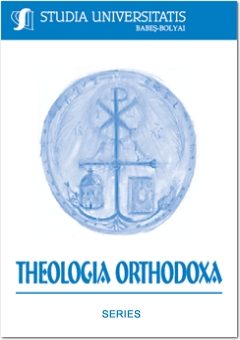FRUMUSEŢEA INTERIOARĂ ÎN LUMINA BIZANTINĂ – DE LA ARTĂ LA MANIERISM DECADENT
THE INNER BEAUTY IN THE BYZANTIUM LIGHT – FROM ART TO DECADENT MANNERISM
Author(s): Marius GhenescuSubject(s): Christian Theology and Religion
Published by: Studia Universitatis Babes-Bolyai
Keywords: art; portrait; canon; face; beauty; light.
Summary/Abstract: The Inner Beauty in the Byzantium Light – from Art to Decadent Mannerism. The premises of the apparition and of the configuration of the iconic face, until the moment when it was crystallised as ideal image of divinity, representing not a bodily beauty, but one outside the body which increases from the darkness of the substance, transformed into light, were owed to the communication between philosophy, religion and art, meditation through which the word became an image of the world. I will insist on the clarification of a problem of various styles which derived from an important centre, that of Constantinople, which delivered throughout the empire models of representing the archetype, but what stood as a victory from the artists side was the fact that they kept the essence of the canon readjusting it to the spirit of each people. We see the same Pantocrator in Daphni, Cefalù, Mon Reale, Saint Sofia, Pammakaristos, Sinai, Boiana (Jesus Christ the Everghet), Studenica, Novgorod (Teofan the Greek) we do not observe at all a stereotype, but on the contrary, a surprising variety of unique and very original interpretations, which we will not meet from the late Palaeological period, when the masters overshadowed their epigones, constantly copying a special expression without realising that they profane, through technicality, the creation of an anonymous master and more than that, distance themselves from the archetype. In the late Antiquity, because of the big social problems of economical fall, political unrest, the human being enters a state of crisis, looking for a new fulcrum, generating his escape from de rational to the extra–terrestrial, in “over-sensibility”, like a possible repression, in the fight with himself, thus realising the passage from the sensual classic Expressionistic appearance exteriorised towards the interiorised one. The breaking of the equilibrium between body and soul is consciously lifted to the rank of artistic principle. The authority of the erminias has closed both in the past and in the current century the sacred contemporary creation, remaining as a fundamental etalon for the “masters” with no talent that are not aware of the fact that by copying a face the message is lost and the archetypal authenticity is estranged, deforming the idea of inner spiritual beauty. The study suggested by I.D. Ştefănescu shows the essential fact that both in donor portraits and in the iconographic prototypes, there is a certain individualisation that makes the difference between one face and the other, being not only a representation of a character, but much more, an expression of a psychological state, of an inner state that is due to the study of human physiognomy as fundament for the genesis of interpretation of the indefinite depth beyond the look.
Journal: Studia Universitatis Babes-Bolyai - Theologia Orthodoxa
- Issue Year: LVII/2012
- Issue No: 2
- Page Range: 223-239
- Page Count: 17
- Language: Romanian

